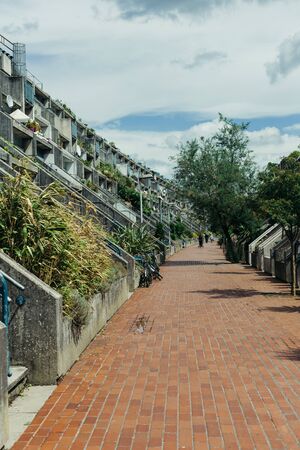Introduction to Feng Shui in the UK Context
Feng Shui, an ancient Chinese practice focused on harmonising individuals with their surrounding environment, has gained increasing popularity among UK homeowners seeking balance and positive energy in their living spaces. While rooted in Eastern philosophy, the core principles of Feng Shui can be thoughtfully adapted to British residential settings, allowing for a seamless blend of tradition and local culture. However, it is essential to recognise that the UK’s distinct architectural styles—from Victorian terraces to modern flats—and its unique climate require a tailored approach. Cultural differences also play a role; British preferences for privacy, reserved aesthetics, and historical property features may not always align perfectly with classic Feng Shui recommendations. Therefore, understanding how to respect both the spirit of Feng Shui and the realities of UK homes is key to avoiding common mistakes. This practical guide aims to bridge these gaps by offering actionable insights for integrating Feng Shui into British residences, ensuring each adaptation feels both authentic and contextually appropriate.
2. Navigating Traditional UK Architectural Features
When considering Feng Shui for UK residences, it is vital to account for the unique architectural features commonly found in British homes. Unlike many Asian layouts, traditional UK properties—such as terraced houses, Victorian semis, and modern flats—often present configurations that can inadvertently disrupt the flow of qi (energy) according to classic Feng Shui principles.
Key Architectural Elements and Their Feng Shui Implications
| Feature | Common Occurrence | Potential Feng Shui Pitfalls |
|---|---|---|
| Terraced Houses | Row housing with shared walls on both sides | Limited light and airflow; potential for stagnant energy due to lack of cross-ventilation; difficulty establishing a clear “mouth of qi” at the entrance |
| Bay Windows | Prominent in Victorian/Edwardian homes; often facing the street | If improperly furnished, may create sharp angles (“poison arrows”) or excessive outward energy dissipation; furniture placement can disrupt harmony |
| Narrow Corridors | Common in period properties and converted flats | Channelling fast-moving qi directly towards main living areas or bedrooms, causing restlessness and imbalance; hard to “soften” energy flow |
Practical Tips for Harmonising with UK Home Layouts
- Create Welcoming Entrances: Ensure front doors are unobstructed and well-lit to encourage healthy energy entry, especially in narrow hallways typical of terraced homes.
- Soften Sharp Corners: Use plants, rounded furniture, or textiles near bay windows to diffuse harsh angles and prevent energetic “cutting.”
- Manage Corridor Energy: Place artwork, mirrors (with caution), or soft lighting in long corridors to slow down rapid qi movement. Avoid placing beds directly at the end of a hallway.
Summary Table: Feng Shui Adjustments for Common UK Features
| Architectural Feature | Simple Adjustment |
|---|---|
| Terraced Entrance | Add a mat or greenery by the door to symbolise grounding and welcome. |
| Bay Window Area | Avoid clutter; use sheer curtains or cushions to soften energy. |
| Narrow Corridor | Add wall-mounted lights or gentle colours to slow qi and create warmth. |
Cultural Considerations for UK Homes
The historical context of British architecture means adaptations are often necessary. Embrace practical tweaks rather than striving for textbook perfection, focusing on comfort, balance, and mindful transitions between spaces. By understanding how these distinctive features interact with Feng Shui principles, homeowners can avoid common mistakes and foster a more harmonious living environment.
![]()
3. Common Feng Shui Misconceptions in the UK
While interest in Feng Shui has grown steadily across the UK, several misconceptions persist that can undermine its effectiveness in British homes. Recognising these widespread misunderstandings is key to creating harmonious spaces that respect both traditional Feng Shui principles and the realities of UK residences.
Misinterpretation of Mirror Placement
One of the most common errors involves the use of mirrors. In many UK homes, mirrors are placed opposite front doors in an effort to “expand” narrow hallways or brighten dark spaces. However, according to classical Feng Shui, positioning a mirror directly facing the main entrance is believed to reflect positive energy (qi) out of the home, rather than inviting it in. Instead, mirrors should be placed thoughtfully to channel light and energy throughout living spaces without disrupting the flow from the entryway.
Front Door Orientation Myths
The orientation of the front door is often misunderstood by UK homeowners who attempt to apply Eastern guidelines literally, regardless of local context. For example, some believe their front door must always face south for optimal Feng Shui, mirroring recommendations found in Chinese texts. Yet, UK architecture and climate are vastly different; south-facing doors may not always be practical or beneficial. The core principle is to ensure the doorway is clear, welcoming, and unobstructed, which enhances both energy flow and curb appeal within the British setting.
Mistaken Beliefs About Indoor Plants
Another frequent misconception concerns indoor plants. While greenery is generally viewed as auspicious in Feng Shui for its association with growth and vitality, not all plants are suitable for every space. Some British residents assume any plant will suffice or place large leafy species in cramped areas, which can block pathways and hinder movement—counteracting positive qi. It’s important to select appropriate varieties and sizes for each room, focusing on healthy specimens that complement rather than overwhelm your interiors.
Cultural Adaptation Is Essential
The unique characteristics of British homes—from period terraces to modern flats—require thoughtful adaptation of Feng Shui principles. By identifying and correcting these common misconceptions about mirrors, doors, and plants, UK residents can enjoy spaces that are both culturally relevant and energetically balanced.
4. Adapting Remedies to British Climate and Lifestyle
When implementing Feng Shui in the UK, it’s essential to consider local climate patterns, lighting variations, and the typical daily routine of British households. Many traditional cures assume consistently warm weather or ample natural light—factors that are not always present in Britain. By adapting your approach, you can avoid common missteps and ensure that your Feng Shui solutions truly enhance your living space.
Aligning Feng Shui with UK Seasonal Patterns
The UK experiences marked seasonal shifts, including long, dark winters and unpredictable weather. Rather than relying solely on sunlight to energise spaces, incorporate layered lighting using lamps and dimmers to mimic natural daylight. This is particularly important for rooms facing north or those with limited window exposure.
| Feng Shui Principle | Traditional Remedy | UK-Adapted Approach |
|---|---|---|
| Light & Energy Flow | Open windows regularly | Use daylight bulbs during darker months; schedule regular window opening during dry spells |
| Indoor Plants | Use tropical plants for vitality | Select hardy species (e.g., English ivy, peace lily) suited to lower light & cooler temperatures |
Practical Adjustments for British Homes
- Draughts and Insulation: While fresh air is vital in Feng Shui, many UK homes are well-insulated to retain heat. Open windows briefly when practical or use air purifiers as an alternative to maintain chi circulation.
- Shoe Storage: In British culture, shoes are often removed at the door. Designate a tidy area near the entrance for footwear to keep energy clear and entryways uncluttered.
Optimising Everyday Routines
Integrate small but meaningful adjustments into daily life. For example, make bed-making part of your morning routine to encourage orderliness and calm. Place a soft rug by the bed for comfort during cold mornings—a practical nod to both wellbeing and Feng Shui grounding principles.
Key Takeaways for UK Residents
- Embrace layered lighting throughout the year
- Select plants that thrive indoors despite low sunlight
- Balance ventilation needs with warmth conservation
By tailoring Feng Shui practices to fit the realities of British homes and lifestyles, you can create harmonious spaces that feel both energetically balanced and practically comfortable all year round.
5. Avoiding Culturally Inappropriate Practices
When integrating Feng Shui into UK residences, it is essential to navigate cultural differences thoughtfully. Respecting British sensibilities means understanding that certain traditional Eastern practices may not align with local customs or aesthetics. The key is to approach Feng Shui as a complementary design philosophy rather than imposing unfamiliar rituals on the home environment.
Understanding Local Preferences
British homes often emphasise practicality, understated elegance, and comfort. Bold decorative items such as large red lanterns or ornate dragon motifs, while significant in some Asian contexts, might appear out of place in a typical UK household. Instead, opt for subtler references to Feng Shui principles—such as natural light, balanced layouts, and thoughtful placement of mirrors—to harmonise energy flow without disrupting the home’s character.
Blending Eastern Philosophy with Western Practicality
The essence of Feng Shui can be respected by focusing on universal principles like cleanliness, decluttering, and creating calm spaces. For example, position furniture to encourage easy movement and conversation, which echoes both British hospitality values and Feng Shui’s emphasis on circulation. Incorporate plants for vitality but select species that suit the British climate and interiors—think ferns or peace lilies rather than bamboo if space or style demands it.
Practical Advice for Sensitive Integration
Consult local design trends before making changes; subtlety is often preferred. Use neutral tones with occasional accents instead of overwhelming colour schemes. When considering water features for prosperity, small table-top fountains can suffice and blend seamlessly with modern British décor. Above all, communicate your intentions with household members to ensure everyone feels comfortable with any adjustments.
By blending the wisdom of Feng Shui with the practicalities and tastes prevalent in the UK, residents can enjoy improved harmony at home without risking cultural missteps or aesthetic clashes.
6. Practical Steps for Effective Feng Shui in UK Homes
Your Actionable Feng Shui Checklist
Applying Feng Shui successfully in a UK residence does not require drastic renovations or the adoption of unfamiliar traditions. Instead, it is about making thoughtful, achievable adjustments that respect both the principles of Feng Shui and the unique character of British homes. Below is a practical checklist designed to help you avoid common pitfalls and create a more harmonious living environment.
1. Clear the Clutter
Clutter obstructs the flow of energy (Qi) and can cause stagnation in your home’s atmosphere. Regularly tidy up entryways, hallways, and communal areas. Avoid storing items behind doors or under beds, as this can block positive energy from circulating freely.
2. Mind Your Entryway
The front door is considered the “mouth of Qi.” Ensure it opens fully without obstruction and remains clean and welcoming. In typical UK homes where space may be tight, use shoe racks or coat hooks to keep this area orderly.
3. Balance Natural Light and Airflow
British weather often means less sunlight, so maximise natural light by keeping windows clean and using light curtains. Open windows regularly to refresh indoor air, even during colder months, to maintain a lively energy flow.
4. Harmonise Furniture Layout
Avoid placing large furniture directly in line with doors or blocking pathways. Position sofas and beds against solid walls for stability, but do not push them completely into corners—allow some breathing space for better energy movement.
5. Choose Appropriate Colours and Materials
Select colours that suit both your personal taste and traditional Feng Shui advice—earthy tones work well with the typical palette of UK interiors. Incorporate natural materials like wood or wool to balance modern decor with warmth and grounding energy.
6. Bring Nature Indoors
Add houseplants suitable for the UK climate, such as ferns or peace lilies, to improve air quality and introduce vibrant life force into your home. Be mindful not to overdo it; too many plants can overwhelm small British rooms.
Guidance for Sustainable Change
Effective Feng Shui is a continuous process rather than a one-off project. Schedule seasonal reviews of your living spaces—aligning these with traditional British spring cleans can make this habit more manageable. Prioritise changes that are easy to implement and maintain within your daily routine.
By following this actionable checklist tailored to UK homes, you can integrate sound Feng Shui principles into your living space without falling into common traps. Focus on consistency and practicality, making gradual improvements that lead to lasting positive change in your home environment.


